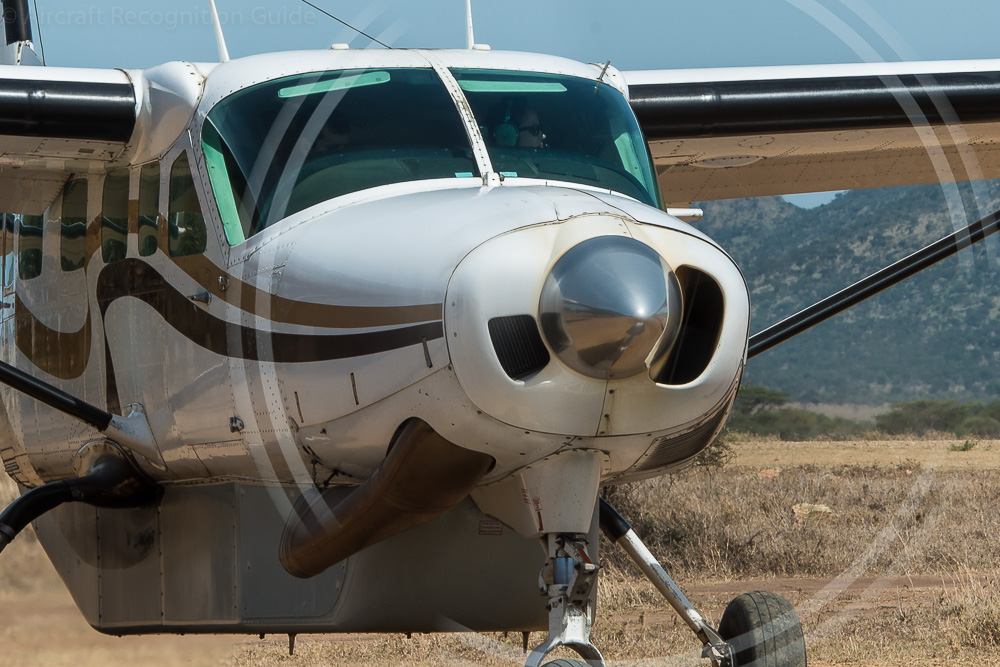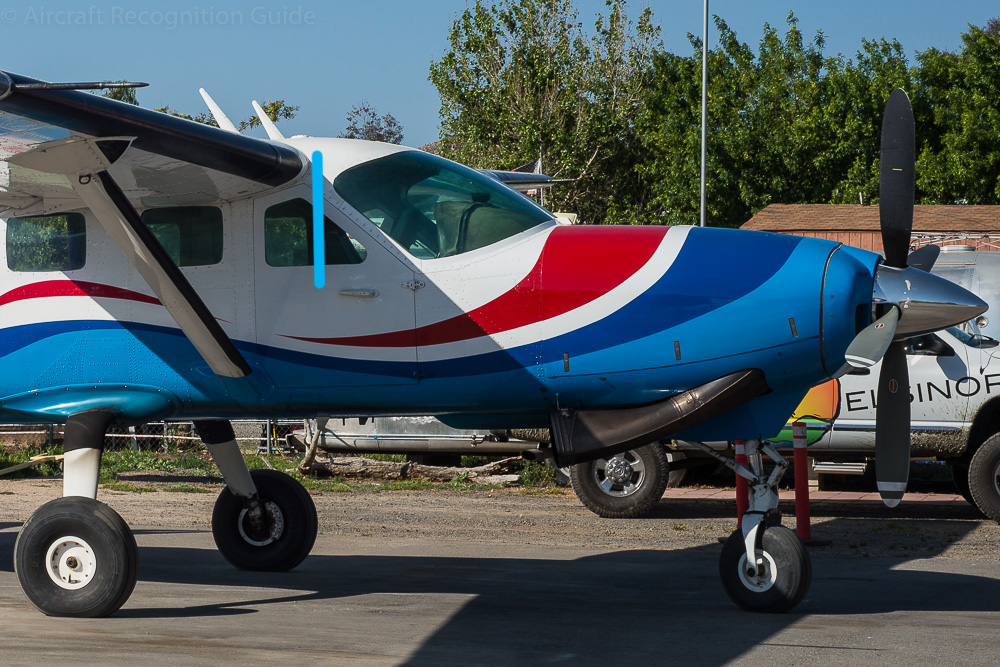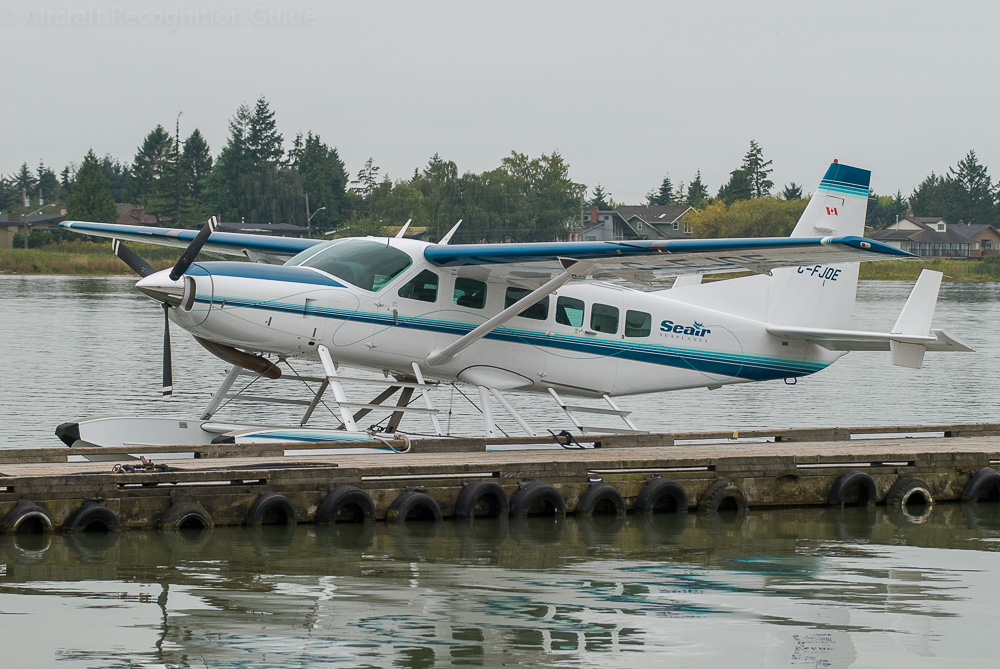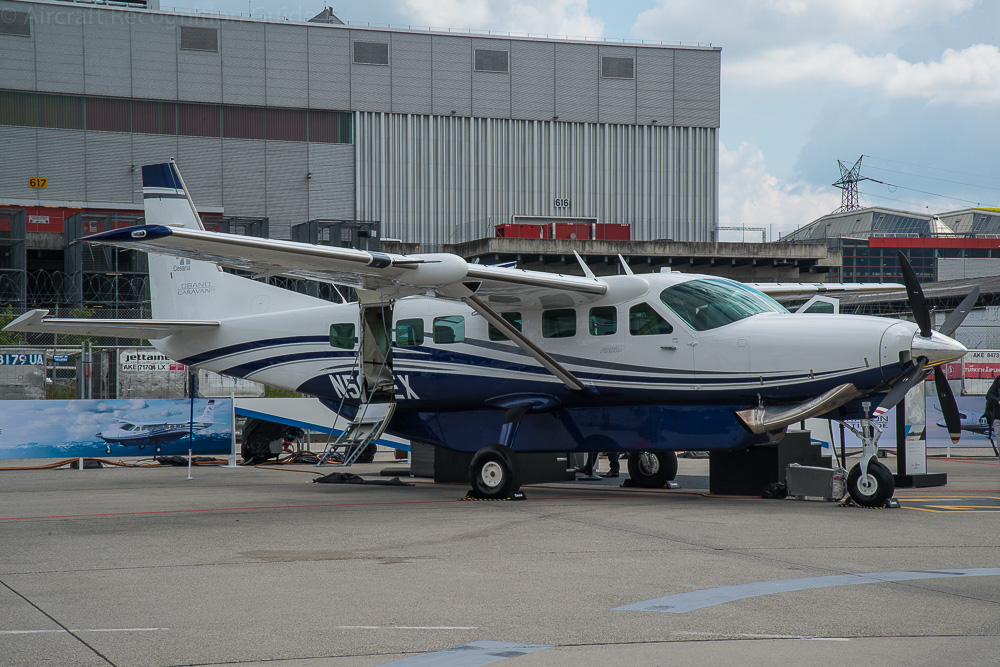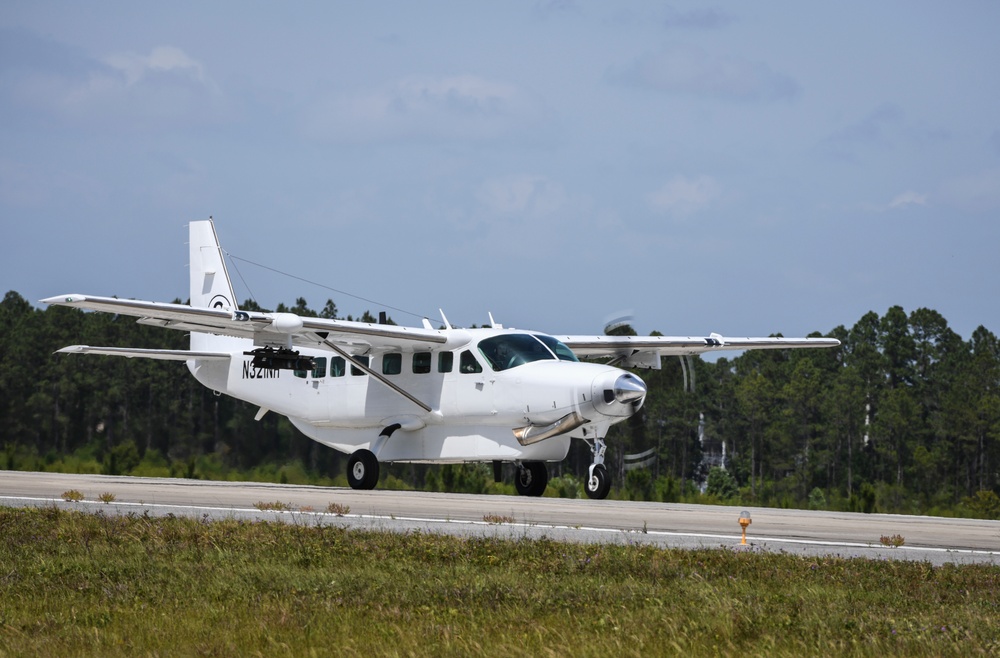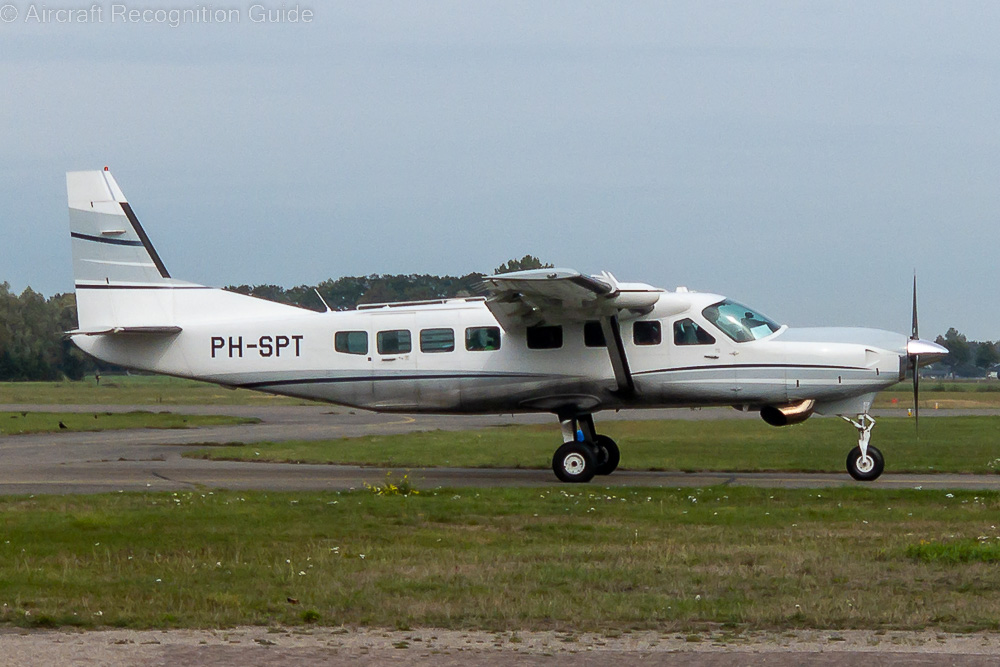
Cessna 208 Caravan
The Cessna 208 Caravan is a quite big single engine turboprop with an all single wheel fixed gear and a non-pressurised fuselage. The cabin has large, rectangular windows. The high mounted wings are braced by struts. The standard Caravan has air intakes on both sides of the prop spinner, with the left intake being larger than the right intake, and a large exhaust on the right side of the fuselage. However, some conversions of the standard Caravan make it look more like similar aircraft, making confusion more likely. The number of propeller blades does not help either, because three, four and five blades are possible (although three is standard). Other recognition points are the tall vertical fin with large dorsal fin, although the prototype had a smaller dorsal fin.
Different versions
The different versions of the Cessna Caravan can be distinguished by
- the length of the fuselage
- the location of the wing leading edge with respect to the cockpit
- the shape of the nose
- the shape and location of exhaust(s)
- the presence of cabin windows
- the presence of floats
Cessna 208 Caravan I & Caravan 675
The first Caravan version has the shortest fuselage of the two main versions. The difference is just 1.2 m, so not easy to see. You can look at where the wing's leading edges are attached to the fuselage. On the short body versions this is halfway the cockpit side window. The Caravan I can be fitted with a fixed wheel undercarriage, floats and amphibious floats. In the latter case, it has stabilising fins at the top and bottom of the horizontal stabilisers.
The Caravan 675 is is also a short-body Caravan I, but with a more powerful engine providing 675 hp (hence the marketing name). The model number remains 208.
Although never used the United States reserved designation U-27A for the Cessna 208. However, it doesn't seem to be used. In Brazil they are known as C-98.
Cessna 208 Caravan Amphibian
The Caravan Amphibian is simply a Caravan 675 on floats. However, not all Caravans on floats with wheels are designated as Caravan Amphibian... Older versions of the short-body 208 are still known as Caravan I.
In the early days Cessna 208Bs did not have enough power to be equipped with floats. Hence you could say for sure that a floatplane Caravan was a 208. However, the Grand Caravan EX version can be equipped with floats as well, so you will have to look more closely.
Cessna 208A Cargomaster
This cargo version, without windows, was developed for Federal Express. The Cargomaster shares the short body with the 208. Originally they had model number 208A, but later this was changed to 208. After all, the Super Cargomaster is also simply designated 208B.
The Cessna Cargomaster has no cabin windows. For the rest it has the key features of the 208.
Cessna 208B Grand Caravan/Super Cargomaster
The Caravan I was stretched by 1.2 metres to create the model 208B Grand Caravan. It is most easily recognised from the original 208 by looking at where the wing leading edge passes through the fuselage. The leading edge lines up with the first cabin window. Beware, the 208B has a small bubble at the side of the fuselage, in between the wing and cockpit front window, but that is not the leading edge. The Super Cargomaster is of course the cargo version with no cabin windows.
The leading edge of the wing is at the same level as the first cabin window. Note the bubble on the side of the fuselage.
Cessna 208B Grand Caravan EX
After other companies had been offering engine upgrades for the Grand Caravan, see below, Cessna decided to build a new version with a more powerful PT6A engine. This is called the Grand Caravan EX. The engine now offers enough power to equip the model 208B with floats, which was until then only possible with the smaller 208, or with re-engined 208Bs.
AC-208 Combat Caravan
A military version of the Cessna 208B delivered first to the Iraqi Air Force is known as the AC-208 Combat Caravan. It has hard points under the wings to store rockets or other weaponry.
AC-208 Combat Caravan (Image from the United States Department of Defense DVIDS imagery database)
Blackhawk Caravan (XP42A or Vy Engine+ upgrade)
Blackhawk Modifications was already known for re-engining King Airs, but they also offer a conversion for the Cessna (Grand) Caravan. The engine is still a PT6A but a -42A (hence the name). The intakes in the nose have the same size (unlike on the regular Caravan). Also they have exhaust pipes on both sides of the nose.
The Blackhawk XP42A upgrade of the Cessna 208 has two equally sized in takes and exhaust on both sides of the nose. (photo: Brandon Simao/airliners.net)
850 Caravan & 950 Caravan
First offered by Aero-Twin and now Revolution Flight is a TPE331 conversion for the Cessna (Grand) Caravan, the 850 Caravan being based on the 208 and 950 Caravan on the 208B. This engine takes the place of the PT6A. They have a single intake under the spinner and a big but short exhaust pipe on the right side of the nose. This is how to recognise it from the Supervan 900.
Due to the TPE331 the nose of the 950 Caravan looks different than that of the original Caravan. The exhaust pipe is short and at the side of the nose. It is different than on the Supervan. (photo: Jack Wolbrink/avia-dejavu.net))
Supervan 900
This is an engine conversion offered by Texas Turbine Conversions. The PT6A engine is replaced by a TPE331, resulting in a different air intake under the spinner and a larger diameter exhaust pipe under the nose. The pipe is longer than on the 850/950 Caravan and placed lower on the nose.
The Supervan 900 conversion of the Cessna 208 has a different air intake and exhaust than the original. The exhaust pipe is longer than that of the 850/950 Caravan.
Soloy Pathfinder 21
Conversion specialist Soloy fitted the 208B with two PT6As driving a single prop. To balance the higher weight of the engine pack, the fuselage was lengthened by nearly two metres primarily behind the wings. Just one was built before the programme was halted.
The Soloy Pathfinder 21 is substantially longer than the Grand Caravan, mostly behind the wings. Also the nose is different.
Confusion possible with
Daher (Quest) Kodiak

The aircraft looking most like the Caravan is the Kodiak. The Kodiak is a bit shorter and has a bigger tail, giving it a "stubbier" appearance. Also the air intake is below the spinner and it has two exhausts on each side of the nose. (photo Jacek Rużyczka/WikiMedia)
Vulcanair VF600W

Vulcanair developed a single engine turboprop aircraft similar to the Cessna Grand Caravan. It is most easily recognised by its smaller cabin windows (in particular compared to the cockpit windows) and the eyebrow cockpit windows. (photo Konstantin von Wedelstaedt/WikiMedia)
GippsAero GA10
The GippsAero GA10 is a larger version of the GA8 pictured above, with a turboprop in the nose. The GA10 has larger windows than the Caravan, and a more triangular shaped tail.
Explorer 350R/500T
This is another Caravan look-a-like, recognisable by the retractable landing gear and associated streamline bodies at the wing strut attachment.

